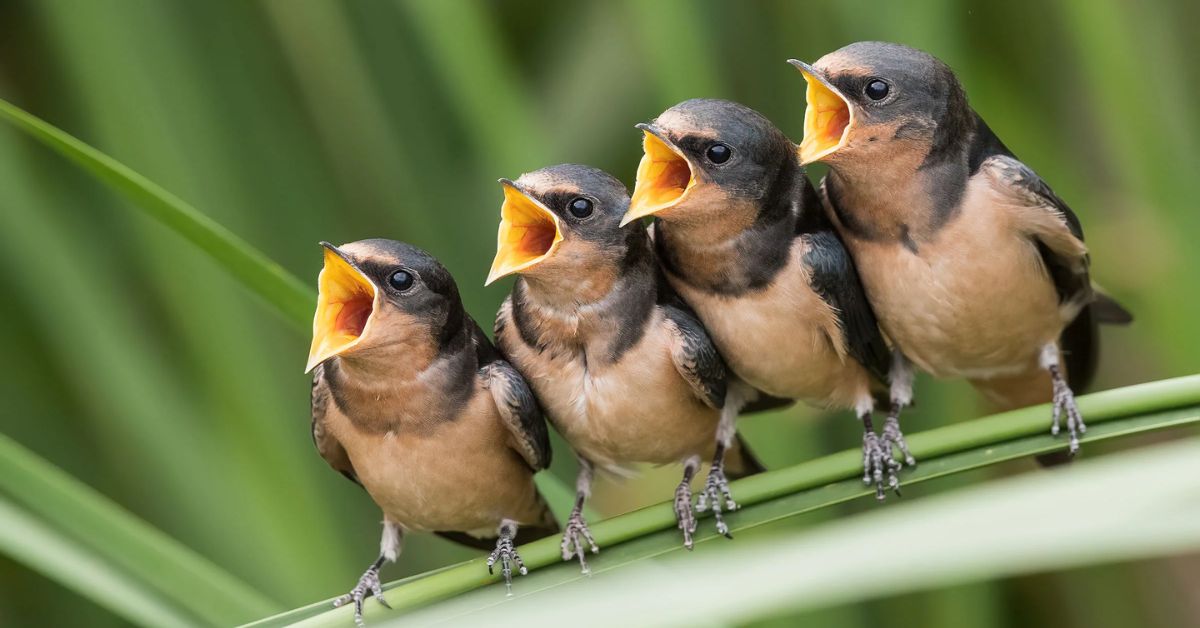Night-singing birds in Florida, such as the Northern Mockingbird and Eastern Whip-poor-will, contribute to nocturnal soundscape diversity, reflecting unique ecological adaptations and behavioural rhythms in the state’s avian community.
As the sun dips below the horizon, Florida’s nocturnal symphony begins, punctuated by the melodic calls of various bird species. Amidst the darkness, one question echoes: “What birds make noise at night in Florida?” Explore the hidden world of nocturnal avian activity, where feathered creatures take centre stage under the cover of night.
Tranquil marshes and wooded areas of Florida, the nocturnal chorus unfolds, orchestrated by a diverse array of avian performers. From the haunting calls of the Great Horned Owl to the rhythmic melodies of the Chuck-will’s-widow, each species adds its unique voice to the nightly serenade, captivating listeners and revealing the vibrant biodiversity of Florida’s ecosystems.
Unveiling Florida’s Nocturnal Avian Symphony
Under the cover of darkness, Florida’s nocturnal avian symphony resonates with an array of captivating calls and melodies, each species adding its unique rhythm to the night. From the enchanting trills of the Eastern Screech-Owl to the haunting hoots of the Barred Owl, explore the rich tapestry of sound that defines Florida’s nocturnal skies.
Diverse Nocturnal Performers
Florida’s nocturnal avian symphony features a diverse ensemble of performers, each contributing its distinct voice to the night’s chorus. From the iconic hoots of the Great Horned Owl to the rhythmic calls of the Chuck-will’s-widow, the state’s nocturnal birds create a mesmerising tapestry of sound that resonates through the darkness.
Ecological Significance
The nocturnal activities of birds in Florida play a crucial ecological role, shaping the dynamics of the state’s ecosystems. Through their nighttime foraging, mating calls, and territorial displays, nocturnal birds help maintain balance within their habitats, contributing to biodiversity and ecosystem health.
Conservation Challenges and Opportunities
Despite their importance, nocturnal birds face various conservation challenges, including habitat loss, light pollution, and climate change. Understanding and protecting these nocturnal avian species are essential for preserving Florida’s ecological integrity and ensuring the continuation of its enchanting nocturnal symphony.
Florida’s Feathered Vocalists
As the sun sets over Florida’s diverse landscapes, the state’s feathered vocalists awaken, filling the night air with their enchanting calls and melodies. From the marshes to the forests, each nocturnal bird species adds its unique voice to the symphony of the night, captivating listeners and revealing the richness of Florida’s avian biodiversity.
Nocturnal Diversity
Florida’s feathered vocalists encompass a diverse range of species adapted to thrive under the cover of darkness. From the stealthy calls of the Barred Owl to the melodious tunes of the Eastern Whip-poor-will, each bird species has evolved unique vocalisations suited to their nocturnal lifestyle, adding depth to the state’s nocturnal soundscape.
Behavioural Adaptations
The nighttime calls of Florida’s avian vocalists serve various purposes, including communication, mate attraction, and territory defence. Through their vocalisations, nocturnal birds establish their presence in the darkness, navigating complex social interactions and ensuring reproductive success in the nocturnal realm.
Human Impacts and Conservation Efforts
Despite their resilience, Florida’s nocturnal feathered vocalists face threats from habitat loss, urbanisation, and climate change. Conservation efforts aimed at preserving their habitats and minimising human disturbances are crucial for safeguarding these charismatic species and maintaining the integrity of Florida’s nocturnal ecosystems.
Exploring Nocturnal Birdlife in Florida
Embark on a nocturnal adventure to explore the hidden world of Florida’s birdlife after dark. From the elusive Black-crowned Night Heron to the captivating calls of the Chuck-will’s-widow, delve into the unique behaviours and adaptations that make these nocturnal inhabitants thrive in the moonlit landscapes of the Sunshine State.
Nighttime Habitats
Florida’s diverse landscapes offer a myriad of habitats that support nocturnal birdlife, from coastal marshes and swamps to pine forests and urban parks. These habitats provide shelter, food sources, and breeding grounds for a wide array of nocturnal bird species, showcasing the state’s rich ecological diversity under the cover of darkness.
Nocturnal Behaviours
Exploring nocturnal birdlife in Florida unveils a fascinating array of behaviours adapted to the challenges of the night. From stealthy hunting techniques to intricate courtship displays illuminated by the moonlight, nocturnal birds exhibit a remarkable suite of behaviours that reflect their specialised adaptations and ecological niches in the nocturnal landscape.
Citizen Science and Conservation Initiatives
Engagement in citizen science programs and conservation initiatives play a pivotal role in understanding and protecting Florida’s nocturnal birdlife. Through community involvement and scientific research, efforts are underway to monitor populations, mitigate threats, and conserve crucial habitats, ensuring the continued survival and well-being of Florida’s nocturnal avian residents.
Identifying Florida’s Night-Singing Birds
Under the serene glow of the moonlight, identifying Florida’s night-singing birds unveils a captivating journey into the state’s nocturnal realm. From the distinctive calls of the Chuck-will’s-widow echoing through the forests to the haunting melodies of the Eastern Screech-Owl in suburban neighbourhoods, recognizing these nocturnal vocalists adds depth to our understanding of Florida’s avian diversity and nocturnal ecosystems.
Unique Vocal Signatures
Florida’s night-singing birds possess unique vocal signatures, allowing enthusiasts to identify them based on their distinctive calls and melodies. From the repetitive notes of the Chuck-will’s-widow to the mournful hoots of the Barred Owl, understanding these avian vocalisations enhances the experience of nocturnal bird watching under the enchanting moonlit sky.
Popular Nighttime Performers
Certain bird species take centre stage in Florida’s nocturnal concert, becoming popular nighttime performers for birdwatchers and nature enthusiasts. The rhythmic calls of the Whip-poor-will and the ethereal whistles of the Common Nighthawk create a mesmerising ambiance, drawing attention to the intricate roles these birds play in the state’s nocturnal ecosystem.
The Challenge of Nocturnal Birding
Identifying night-singing birds in Florida presents a unique challenge, requiring keen listening skills and a familiarity with the subtle nuances of each species’ vocalisations. As enthusiasts embrace the challenge, they not only deepen their connection with the nocturnal avian community but also contribute valuable data to ongoing research and conservation efforts aimed at protecting these captivating nocturnal performers.
Nocturnal Chorus: Birds of the Florida Night Sky
Tranquil darkness of Florida’s night sky, a symphony of nocturnal birds creates an enchanting chorus, echoing through the swamps, forests, and urban landscapes. From the haunting calls of the Barred Owl to the ethereal melodies of the Chuck-will’s-widow, each nocturnal performer adds depth and intrigue to the captivating nocturnal landscape of the Sunshine State.
The Melodic Ensemble
Florida’s night sky serves as the stage for a melodic ensemble of nocturnal birds, each contributing its unique voice to the nocturnal chorus. From the iconic calls of the Eastern Screech-Owl to the haunting hoots of the Great Horned Owl, these feathered performers weave a tapestry of sound that defines the nocturnal landscape of Florida.
Ecological Importance
The nocturnal chorus of birds in Florida holds significant ecological importance, playing crucial roles in maintaining ecosystem balance and biodiversity. Through their vocalisations, nocturnal birds communicate, establish territories, and engage in courtship rituals, shaping the dynamics of their habitats and contributing to the overall health of Florida’s ecosystems.
Conservation Challenges and Awareness
Despite their importance, Florida’s nocturnal bird species face numerous conservation challenges, including habitat loss, urbanisation, and climate change. Raising awareness about the value of these nocturnal performers and implementing conservation measures are essential steps in safeguarding their habitats and ensuring the continuation of the nocturnal chorus for future generations to enjoy.
FAQs
Which birds are known for making noise at night in Florida?
Common night-singing birds in Florida include the Northern Mockingbird, Eastern Whip-poor-will, Barred Owl, Chuck-will’s-widow, and Great Horned Owl.
Why do some birds sing at night in Florida?
Nocturnal singing in birds serves various purposes such as mate attraction, territory defence, and communication, especially during breeding seasons.
What time do nocturnal birds in Florida typically start singing?
Nocturnal birds in Florida often begin their vocalisations at dusk and may continue throughout the night, depending on the species and environmental conditions.
Are night-singing birds in Florida harmful or beneficial to the ecosystem?
Night-singing birds play beneficial roles in the ecosystem by controlling insect populations, pollinating plants, and contributing to the overall biodiversity of Florida’s habitats.
How can I identify nocturnal birds by their calls in Florida?
Identifying nocturnal birds by their calls requires listening carefully to their distinctive vocalisations and familiarising yourself with common nocturnal bird species in Florida’s ecosystems.
Conclusion
Nocturnal avian symphony of Florida encompasses a rich tapestry of sounds that reflects the state’s diverse ecosystems and avian communities. From the eerie calls of the Barred Owl to the enchanting melodies of the Chuck-will’s-widow, each nocturnal bird adds depth and character to the nighttime landscape, captivating both seasoned birdwatchers and curious listeners alike.
As we delve deeper into the nocturnal world of Florida’s avian inhabitants, it becomes evident that understanding and appreciating their nighttime calls is integral to conserving their habitats and preserving their vital roles in the ecosystem. Through conservation efforts and community engagement, we can ensure that future generations will continue to be entranced by the mesmerising nocturnal chorus that echoes through the Florida night sky.
Let us embrace the mystery and wonder of Florida’s nocturnal birds, allowing their haunting calls and rhythmic melodies to inspire us to cherish and protect the natural wonders that adorn our nocturnal landscapes, ensuring that these feathered vocalists continue to thrive under the moonlit skies of the Sunshine State.

Welcom to https://birdsaboutinfo.com. Our content is for general information purposes. While we aim for accuracy, use it at your own risk. Seek professional advice for specific concerns. We’re not responsible for external links or the outcome of using our information. Some content may contain affiliate links. We may update this Disclaimer.











